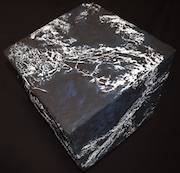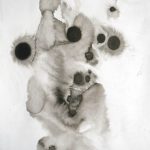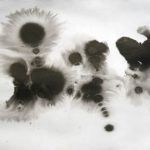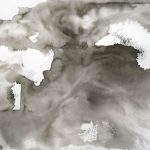Ritual (Italy) Interview, June 2000
Questions from Roberto Michieletto
Q: ‘Watchful’ is the reissue of the album you issued in 1997, but I heard that
you planned a new work with Amoeba for this year; is it true?
A: Yes, we finished the new CD last year, and it is scheduled to come out on Release in September. The new CD is called ‘Pivot’, and it is slightly less diffuse than ‘Watchful’, a bit more song-like. It still has a very introspective feeling, though.
Q: You have proven to be interested in exploring different musical fields; with
Amoeba you have explored the song oriented one (even if in a transversal
way). Do you think your attempt has been successful with ‘Watchful’? Which
are the weak points of the album?
A: ‘Watchful’ conveys what we wanted to express. In that way it was quite successful. It’s a very unique sounding pop album. (I use the word ‘pop’ very loosely, since I don’t really know how to describe it.) You must understand that it is impossible for me to hear the album through another person’s ears. I am too close to the creation of the music, and I will always hear it with a critical ear, as a composer not a listener. It’s a bit ironic, since I usually start each recording project with an idea in my mind for music that I want to listen to, but by the time I finish I only hear the shortcomings! I think the strongest parts of ‘Watchful’ are Rick’s beautiful guitar melodies, and the textural ambiguity of the entire album. For me, the weakest part is my own singing voice, which still needs a lot of improvement. I am not yet able to sing the sounds that are in my head.
Q: In your web site there is written: “The cinematic songs of Amoeba” and “The
organic electronics of Robert Rich”. Would you like to deepen this
difference?
A: Well, it’s not so much a separation as it is a choice of focus. My own approach to “organic electronics” fills all of my work, including Amoeba. This just means that, as a producer and as a composer, I like to build textures that sound unique or mysterious without sounding “technological” or trendy. I try to find emotionally expressive soundscapes that don’t resemble the everyday sounds that we are familiar with. The “cinematic songs” are just the chosen application of this approach in the realm of “pop music.” It’s a way to describe the music without resorting to a misleading term like “pop”, which brings to mind a more commercial orientation. The fact is that I really don’t know how to characterize music, neither Amoeba nor my solo work. It’s just music. Once someone puts a name on it I tend to get uncomfortable and I start pushing the boundries.
Q: Why did you decide to reissue ‘Trances And Drones’? Do you want to let
people understand that you were doing those things 17 years ago, also
considering that now musicians working with drones and similar are often
labelled as “innovative”?
A: I re-released Trances/Drones on Release to keep it in print. I pulled the title from Extreme, since they have not sent me a royalty statement in 4 years. I want to keep all of my albums in print at all times, if possible, but I refuse to work with a dishonest record label.
I don’t think of myself as an innovator, but I try to make music that will last a long time. I reference my own work to an internal measurement, a need to express certain feelings or hear certain sounds. Many of the people who think they are innovating simply have no sense of history. I feel that my own work has followed in the footsteps of composers like LaMonte Young, Terry Riley, Pauline Oliveros, as well as some of the German spacemusic, Eno, Hassell and others. I also owe a huge debt to North African, Indonesian and Indian music. It’s not a question of staking my claim as an innovator. The fact is that anybody who follows an internal compass will speak in a personal voice, and that is a sort of innovation; but when people think too hard about “innovation” in the context of stylistic trends, they end up defining themselves in terms of those trends and lose the personal voice that could lead to true innovation.
Q: Can you introduce us to ‘Trances And Drones’, trying to recreate the
atmosphere, the thoughts and everything there was around your mind when you
wrote those tracks in 1983?
A: I don’t think I could even recreate that atmosphere for myself after all these years. A college student at the time, I recorded about half of those pieces in my dormitory at Stanford. I had already released my first album ‘Sunyata’, which reflected the Sleep Concert idea in a more compact form. So, ‘Trances’ and ‘Drones’ moved towards a relatively more melodic, more active direction. The distiction is relative, since ‘Trances’ and ‘Drones’ were still quite slow. They concentrated more on evoking hypnotic intensity through a slowly shifting evolution in the music, whereas some of my earliest work was very static. I was studying Psychology at the time, with a strong interest in trance and altered states of consciousness. I was investigating some of the rituals used in shamanic cultures to invoke trance, noting the way these rituals used music to guide the journey. I wanted to find a musical language that might work in a similar way for our own culture, without attempting to adopt shamanic belief systems. There are certain common elements to trancendence which we can explore from within our own modern (western, rationalist) perspective, and music can help open doors to these experiences without the baggage of a superimposed cultural paradigm. That desire to evoke trancendent experiences permeates all of my albums, but the slow intensity of that early work seems to do it in the purest way, perhaps because I wanted the musical structure to vanish completely beneath the hypnotic effect.
Q: Which was the input that let you start Sleep Concerts?
A: The Sleep Concerts were inspired by a combination of several influences, along with a desire to get an audience to listen to sound in a special way. I was familiar with the fact that many cultures performed all-night musical rituals. These include Navaho chants (sometimes 3 days long), Indonesian Wayang shadow-puppet plays, performances of Indian classical music, and many others. I wondered what was special about this continuous musical immersion, and I felt that something special happens late at night while listening in such a deep environment. Other Western influences included Terry Riley’s notorious all-night organ improvisations in the ’60’s (which I never experienced), a performance by John Cage and Marianne Amocher called “Empty Words – Close up” that lasted all night, and the work of Fluxus artist Richard Hayman, who would perform for his audience while he was asleep, using electrodes attatched to oscillators and whistles in his mouth.
But most of all, I was trying to find a way to express to an audience an experience that I was creating for myself in my own bedroom. At the time, my studio (so to speak) was in my bedroom, and I was setting up patches on my modular synth that would change slowly over time, creating a static sound environment that resembled strange insects, or underwater whale sounds. I would allow these patches to run unattended for days at a time, keeping the sound at a low volume while I slept. Something special happened in these sound environments, as I taught myself how to listen to music that never changed. I simply wanted to find a way to encourage other people to listen to sound in this different way, without expectations of musical structure, tension/release, or other attempts at maintaining interest. It occured to me that the only way I could encourage people to listen for such a long duration would be to suggest that they could fall asleep. This would not only set up an environment for quiet deep listening, but also allow us to create that ritual atmosphere that seemed possible in a late-night extended performance. It was an opportunity to discover a type of sound-magic typically reserved for indigenous cultures where such rituals are preserved intact.
Q: Could you describe what happened during your Sleep Concerts?
A: People arrive with sleeping bags and pillows, settle down, and the music starts around 11 PM. The music begins slightly melodic but very slow, and slows down even more until it turns into quiet drones and environmental sounds for the duration of the night. The volume is so low that it becomes difficult to tell where the music stops and the outdoor noises begin. The acoustic effect can be similar to removing the walls, like the sonic component to a virtual reality, with one’s own dreams and hypnogogic images providing the visual part. The music becomes slightly more active and a bit louder (still quiet) towards the morning when it is time to wake up. Typically, in the morning, people are very quiet after the music stops, and very sensitive to their environment.
Q: Did you feel that most of the audience understood the meaning of what you
were conveying or of what you wanted to convey?
A: The immportant thing is that they create a useful meaning for themselves. I don’t want to impose too much of an interpretation upon other people’s experience; rather, I want to create a stimulating atmosphere for them to explore themselves.
Q: You have always been connected with “ambient” and “industrial” sounds; today
these words seem to be meaningless or they’re so exploited that too many
sounds are described in that way. Do you feel the same? Do you see your
music like ambient/industrial or something different?
A: I agree that these words are overused and meaningless. “Ambient” implies static and passive to me, and I try to make music that is more psychically active, athough still somewhat subtle in the way it impinges upon the senses. “Industrial” has come to mean a particular set of nihilistic energies combined with an aggressive musical aproach, and my music is neither nihilistic nore aggressive. I do embrace the musical value of noise and dissonance, but for me, all noises serve a compositional purpose, to deepen the complexity and add multiple levels to the music. Perhaps my music is somewhat Hermetic, in that it relates to ineffable and intangible personal experiences which I can only express sonically with any degree of satisfaction. This expression takes the music into some intense and sometimes dark places, but even those darkest places contain elements of light. Anyway, I am quite bad at finding categories and names for music.
Q: You have often declared your love for Just Intonation; could you speak about
it and tell me the reason why Just Intonation attracts you so much?
A: I love Just Intonation for its greater depth and expressive color. Just intonation involves any tuning system that uses small, whole numbered ratios between the frequencies in a scale. This is the natural way for the ear to hear harmony, and it’s the foundation of classical music theory. The dominant Western tuning system – equal temperament – is merely a 200 year old comprimise that made it easier to build mechanical keyboards. Equal temperament is a lot easier to use than JI, but I find it lacks expressiveness. It sounds dead and lifeless to me. As soon as I began working with JI, I felt like I moved from black & white into color. I found that certain combinations of intervals moved me in a deep physical way. Everything became clearer for me, more visceral and expressive. The trade-off is that I had to be a lot more careful with my compositions, for while I had many more interesting consonant intervals to choose from, I also had new kinds of dissonances to avoid (although sometimes these dissonances also open new possibilities.) Just intonation also gave me a greater appreciation of non-Western music, which has clearly had a large impact on my own style.
Q: Are you used to sample concrete sounds? Do you think it’s important to
sample and manipulate natural and environmental sounds?
A: I like to use sounds that evoke an imaginary landscape, and often the best way to do this is to manipulate the sounds from our real landscapes, to transform them into the surreal. As for sampling, it certainly plays a major role in my work, but I prefer not to take samples from other people’s recordings. I tend to create my own sounds and then use the sampler to manipulate these sounds.
Q: How much of your music is improvised?
A: It is a combination between improvisation and composition. The recording studio renders this distinction somewhat meaningless, since one can use fragments of improvisations to build a composition. When I perform live, I improvise around conceptual frameworks that I prepare in advance.
Q: You have co-operated with Steve Roach, Lustmord, Alio Die and Lisa Moskow;
the collaborations with other musicians are an occasional experience or do
you think that an important part of your musical creativity could be
adequately directed within these projects?
A: I need collaborations to keep my work fresh. I find it very stimulating to compose together with another person, although it can also be frustrating. I think the inevitable tensions within a collaboration make the music more interesting. Usually I oscillate between solo work and collaboration. The solo work gives me the best chance to perfect a musical vision, but it also takes much longer because I become very critical of my own work.
Q: Would you like to speak about your “extra composer” activities (producer,
designer, programmer, etc.)?
A: These days, I am spending an increasing amount of time helping other people with their projects, and also doing sound design. The sound design is a good way to make some extra money, and it’s fun for me. I do a bit of film work (some textures in the science fiction film “Pitch Black” for example), and also a few loop libraries (including a Loops-for-ACID CD called “Liquid Planet”.)
I have also been acting as a part-time mastering engineer for about 5 years now, including all styles of music, but specializing in experimental projects. Mastering is an area that I remain rather humble about, since these skills can take a lifetime to perfect. I have learned that I have good ears and good sensibilities for this craft, but there is constant room for improvement.
I also recently finished a major producing and engineering job for my friend Percy Howard and his group Meridiem. (Percy’s previous collaborations have included Fred Frith, Bill Lasswell, Vernon Reid, Trey Gunn and others.) This new album “The Scattering Time” is quite exciting, and includes Jarboe (Swans), Bill Reiflin (Ministry), Jonathan Byerly (Grassy Knoll), Nicky Skopelitis and other excellent musicians. We recorded this in my studio, and I am quite proud to be so involved. An album like this takes a long time to make, though, and I don’t plan on sacrificing my solo carreer to become a producer.
Q: Do you still have your first analog synth you build when you were 13 years old?
A: I have not used it since about 1987. For many years it sat in Rick Davies’ garage. Then it was with my photographer friend Brad Cole. Last year I sold it to someone in San Francisco, who will hopefully have the time to fix the many problems caused by years of sitting. I don’t miss it, though. It was a constant struggle. I do still love modular synths in general, and I am currently assembling a small high-end modular system called MOTM from Synthesis Technologies. I plan to use it mostly for processing acoustic sources, since it has an excellent selection of interesting filters.






You must be logged in to post a comment.